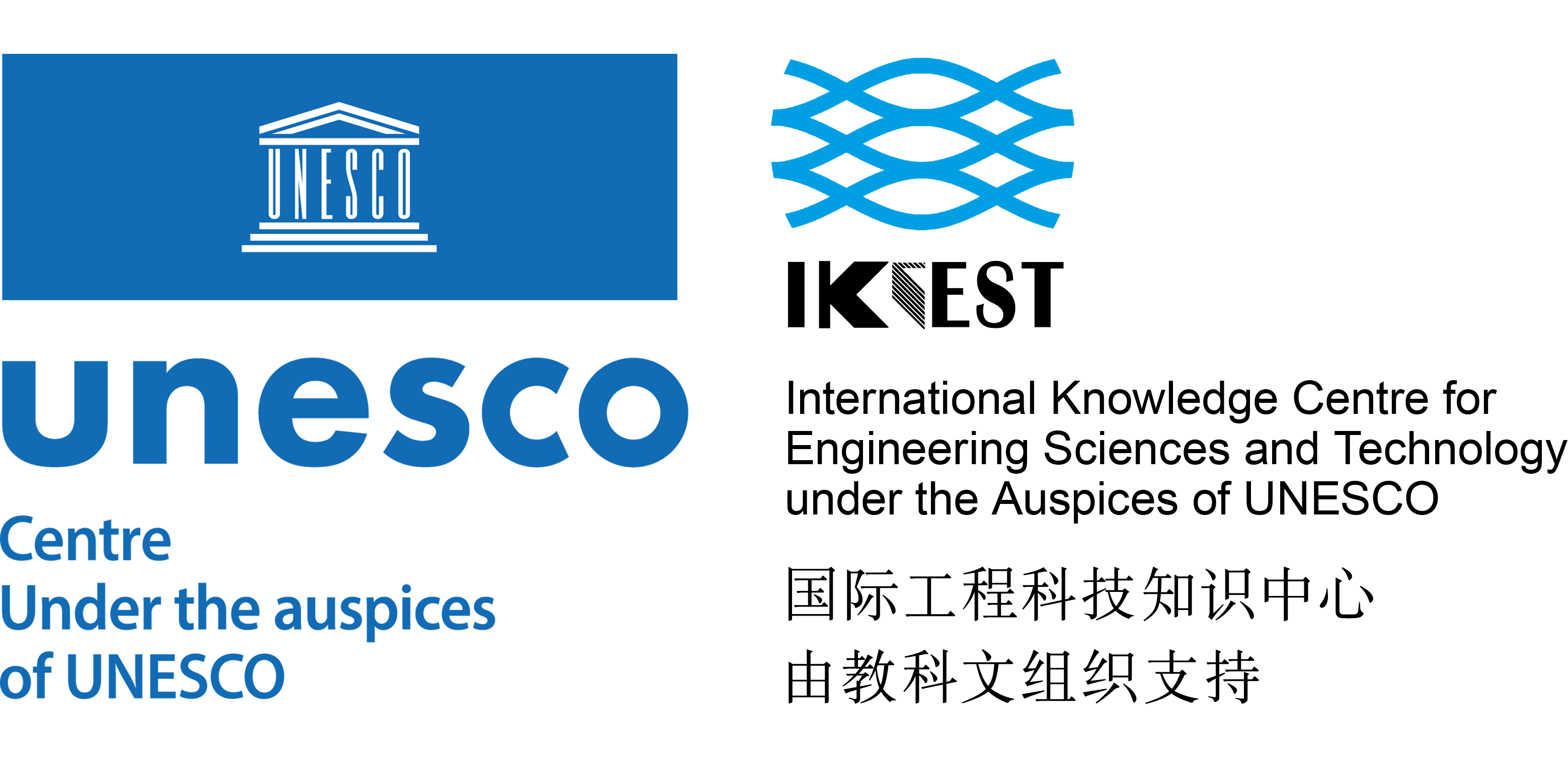Journal
Please choose volume & issue:
-
Stabilized classification control using multi-stage quantum convolutional neural networks for autonomous driving
Keywords:Quantum stateConvolutionTensorsOptimizationAutonomous vehiclesAccuracyFeature extractionReal-time systemsQubitComputer architectureNeural NetworkAutonomous VehiclesClassification AccuracyComputational EfficiencyArtificial Neural NetworkStability Of SystemClassification PerformanceReal-time PerformanceQuantum ComputingDynamic AdjustmentLyapunov OptimizationInformation TechnologyConvolutional LayersHighest AccuracyInformation And Communication TechnologiesConvolution OperationPractical LimitationsQuantum StateInference TimeMultistage DesignDynamic SelectionInput TensorQuantum CircuitResource-constrained EnvironmentsKorea GovernmentMNIST DatasetDeep Feature ExtractionInstitutional InformationArrival RateAutonomous drivingLyapunov optimizationmulti-stage quantum convolutional neural networkAbstracts:Real-time processing with high classification accuracy is a fundamental requirement in autonomous driving systems. However, existing neural network models for classification often face a tradeoff between computational efficiency and accuracy, necessitating the development of advanced optimization methods to address this limitation. Additionally, dynamic driving environments offer opportunities to enhance classification performance by leveraging the principles of quantum computing, particularly the properties of superposition and entanglement. In response to these challenges, a multi-stage quantum convolutional neural network (MS-QCNN) approach is proposed, designed to improve image analysis performance by effectively utilizing the multi-stage structure of QCNN. A Lyapunov optimization framework is applied to achieve optimal performance, which maximizes time-averaged efficiency while ensuring system stability. This framework dynamically adjusts the MS-QCNN model in response to environmental variations, promoting enhanced queue stability and achieving optimal time-averaged performance.
-
Solving optimal electric vehicle charging station placement problem using digital quantum annealing
Keywords:AnnealingQuantum annealingQuantum computingCharging stationsElectric vehicle chargingOptimizationCostsSimulated annealingHardwareComputational modelingCarbon emissionsClimate changeState Of ChargeElectric VehiclesElectric Vehicles ChargingElectric Vehicle Charging StationsCharging Station PlacementOptimization ProblemGreenhouse GasOptimal ModelLinear ProgrammingSimulated AnnealingCombinatorial ProblemConstruction CostCombinatorial Optimization ProblemNear-optimal SolutionMixed Linear ProgrammingQuantum AlgorithmsStation DensityOptimization AlgorithmComplex ProblemsLess Than Or EqualQuantum ComputingTaipei CityCharging DemandCandidate LocationsMixed Integer Linear ProgrammingTraffic FlowPenalty TermSlack VariablesEfficient CoverageLarge-scale ScenariosDigital annealingoptimizationquantum annealingquantum applicationAbstracts:It is imperative to reduce carbon dioxide emissions and fossil fuel consumption to ensure the Earth's sustainable future and mitigate negative impacts like extreme climate changes caused by greenhouse gases. Electric vehicles (EVs) play a pivotal role in this context, where the convenience of charging stations is crucial in influencing consumer choices. This paper formulates the placement of charging stations as an optimization problem, considering factors like station density, accessibility, coverage, and regional cost variations, to minimize total construction costs. The problem is mapped onto a quadratic unconstrained binary optimization (QUBO) model. The QUBO can efficiently represent and solve complex combinatorial optimization problems, making it suitable for quantum and advanced classical algorithms. Utilizing digital quantum annealing, the optimal or near-optimal solutions are efficiently identified. The performance of the proposed approach is compared with classical algorithms, including mixed linear programming and simulated annealing, demonstrating significant advancements of digital annealing.
-
Entanglement routing with guaranteed fidelity for drone-based quantum networks
Keywords:Quantum entanglementDronesPurificationRoutingRouting protocolsDampingQubitQuantum mechanicsQuantum channelsWorking environment noiseQuantum NetworkOptical FiberMultiple AttemptsNoisy EnvironmentsNetwork ThroughputEntangled StateNetwork LifetimeEnergy Of NodesMultiple PurificationTime SlotSpace ComplexityQuantum StateEnvironmental NoiseQuantum InformationAdjacent NodesDegree In EngineeringRouting AlgorithmLink CapacityQuantum Key DistributionQuantum ChannelClassical ChannelQuantum MemoryQuantum ApplicationsSatellite LinksBell StatesQuantum CryptographyHop CountRemote NodesPriority QueueFiber LinkDrone-based quantum networksentanglement purificationentanglement routingguaranteed entanglement fidelityAbstracts:The quantum Internet is profoundly impacting the world and is expected to be operational in the future. With the global wide-area quantum networks begin to take shape, drone-based quantum entanglement networks have attracted widespread attention. Compared to quantum links based on optical fibers or satellites, drone-based quantum entanglement networks can effectively address the need for responsive and on-demand quantum network coverage across diverse locations and operational times. To realize network construction, entanglement routing protocols pose a significant challenge. On the one hand, the fidelity of the entangled system degrades hop-byhop. On the other hand, the dynamics and limited energy of drone nodes are equally not negligible. However, existing works have not adequately addressed these issues. In this paper, we present a novel fidelity-guaranteed entanglement routing protocol for drone-based quantum networks (FGER_D). The FGER_D considers the node energy and quantum link vulnerability comprehensively, selects end-to-end fidelity as the routing metric, and employs multiple attempts' entanglement purification scheme to provide fidelity-guaranteed entanglement connections in noisy environments. Numerical simulations demonstrate that compared to existing algorithms, FGER_D improves network throughput by approximately 24% under default settings, while also ensuring network fidelity and extending network lifetime. Our work is expected to provide a theoretical basis for the deployment of drone-based entanglement distribution networks.
-
QNN framework based multiclass classification for downlink NOMA detectors
Keywords:NOMADetectorsInterference cancellationEncodingSymbolsQubitDownlinkBinary phase shift keyingNeural networksTrainingDetectornon-orthogonal multiple accessquantum neural networkAbstracts:Quantum neural networks (QNNs) have attracted significant attention recently, primarily because of their potential to address complex problems deemed difficult for traditional computational methods. This study explores the viability of QNN in handling multiclass classification tasks in downlink nonorthogonal multiple access (NOMA) frameworks. The investigation includes a design of QNN framework and performance evaluation of a QNN-based NOMA detector, integrating maximum likelihood (ML), successive interference cancellation (SIC), and rotated ML (RML) methods. A QNN framework was configured for all three detectors, and a comparative analysis was conducted in terms of loss, accuracy, and testing across varied signal-to-noise ratio (SNR) levels and power allocation coefficients, considering NOMA-specific characteristics. Furthermore, the computational complexity of each detector was analyzed within the proposed framework.
-
Phase matching in Grover-QAOA for solving 3-SAT problems
Keywords:Approximation algorithmsMixersSearch problemsQuantum algorithmIterative methodsHardwareCost functionStandardsQubitQuantum statePhase Matching3-SAT ProblemQuantum CircuitPhase-matching ConditionOptimization ProcessEstimation AnalysisQuantum StateQuantum ComputingTarget StateAngle ParametersArbitrary AngleQuantum AlgorithmsNP-complete ProblemIterative OperationKorea Government3-satisfiability problemphase matchingquantum algorithmquantum approximate optimization algorithmquantum search algorithmAbstracts:The Quantum Approximate Optimization Algorithm (QAOA) is a promising framework for combinatorial optimization, yet its performance is often hindered by the complexity of parameter optimization. In this work, we investigate phase relationships in Grover-QAOA (G-QAOA) for solving 3-SAT problems and introduce a novel phase matching condition that simplifies the optimization landscape. By aligning the phases of the problem and mixing Hamiltonians, our approach reduces the number of variational parameters from 2p to p, significantly lowering computational overhead. We further propose single-angle G-QAOA, an extension that enables additional parameter reduction. Numerical simulations demonstrate that our method achieves success probabilities comparable to those of standard G-QAOA while requiring fewer quantum circuit evaluations. These results highlight the potential of our proposed G-QAOA for practical implementation on near-term quantum hardware.
-
Special issue on quantum technologies for communication systems
Keywords:Quantum computingOptimizationComputer scienceQuantum algorithmNeural networksNOMACommunication networksResource managementQuantum circuitDetectorsCommunication SystemsQuantum TechnologiesNeural NetworkCommunication NetworkDistribution SystemAutonomous VehiclesQuantum ComputingSubject CategoriesLow Earth OrbitQuantum CircuitQuantum AlgorithmsQuantum AdvantageQuantum MachineConvolutional Neural NetworkElectric VehiclesMulti-labelPhase MatchingNon-orthogonal Multiple AccessSuccessive Interference CancellationQuantum NetworkAbstracts:Quantum technologies hold the potential to revolutionize classical technologies and their emerging applications in communication networks and mobility. This potential is expected to grow alongside the advancement of quantum computation-capable devices. Currently, quantum devices are at the noisy intermediate-scale quantum (NISQ) level and can support only a few hundred physical qubits. While these devices remain constrained in scale, early fault-tolerant quantum hardware is capable of demonstrating the quantum advantage, the ability to outperform classical counterparts in specific computational tasks. This capability is essential for enhancing coordination of autonomous and distributed systems, such as low Earth orbit (LEO) satellites, autonomous driving vehicles, and complex infrastructure required by the hyper-connected 6G communication networks. Especially in artificial intelligence (AI) research domains, parameterized quantum circuits used in quantum algorithms, quantum optimization, and quantum machine learning (QML), can implement various functionalities of classical neural network architectures with significantly fewer parameters and computation resources. This can substantially reduce the latency and memory constraints of current large-scale classical neural network frameworks, including diffusion-based generative computer vision algorithms and large language models. According to the current roadmaps for quantum computer development, the number of qubits is expected to greatly increase, and the beyond-NISQ era is set to emerge approximately by 2026. This highlights the need for early contributions to explore the potential impact of quantum algorithms and QML on emerging communication system design and future applications. Towards unleashing the full potential of quantum algorithms and QML, this special issue focuses on quantum algorithms and QML principles, algorithms, and use cases to seek original contributions to various aspects of QML-based system architectures, protocols, resource management, error correction, and other technologies in communication systems. Furthermore, there is also an increasing interest in applying classical AI techniques for solving problems within quantum computing and computation, such as in quantum software engineering, quantum circuit design, and optimizing quantum optimization algorithms. Despite significant interest in this field from both academia and industry, many important questions remain. This special issue of JCN presents five high-quality papers which are categorized under (i) theory, (ii) communications and networks, and (iii) applications. In the following, we will introduce the topic section categories and corresponding papers included in this Special Issue.
Hot Journals
- Risk Breakdown Matrix for Risk-Based Inspection of Transportation Infrastructure Projects
- Social Control in Outsourced Architectural and Engineering Design Consulting Projects: Behavioral Consequences and Motivational Mechanism
- 2022 Best Paper Award
- Hold-Ups and Failures in Negotiated Order: Unearthing the Nuances of Rework Causation in Construction
- Prevalence and Risk Factors for Poor Mental Health and Suicidal Ideation in the Nigerian Construction Industry
- CFRP–Cable-Stayed Bridge Hybrid with Partial Suspension and a Span Exceeding 3,000 m: Concept, Optimization, and Construction
- Impact of Wind Load Characteristics on Computed Bridge Stay-Cable Forces Used for Bridge Health Monitoring
- Weak-End and Frequency Detection of Elastically Supported Bridges by Contact Residual Response of Two-Axle Test Vehicle in a Round Trip
- Development of Performance-Based Fragility Curves of Coastal Bridges Subjected to Extreme Wave-Induced Loads
- An Analytical Model to Evaluate Short- and Long-Term Performances of Post-Tensioned Concrete Box-Girder Bridges Rehabilitated by an Ultrahigh-Performance Concrete Overlay
- Three-Dimensional Velocity Distribution in Straight Smooth Channels Modeled by Modified Log-Law
- Experimental Investigation on Flow Past Two and Three Side-by-Side Inclined Cylinders
- An Experimental Investigation of Rotor–Box Aerodynamic Interaction 1
- Modeling Gas–Liquid Flow Between Rotating and Nonrotating Annular Disks
- Entry Length Requirements for Two- and Three-Dimensional Laminar Couette–Poiseuille Flows
Advanced Materials (3,745)
- Structured Perovskite Light Absorbers for Efficient and Stable Photovoltaics
- Strategies for High‐Performance Solid‐State Triplet–Triplet‐Annihilation‐Based Photon Upconversion
- Atomic Engineering Catalyzed MnO2 Electrolysis Kinetics for a Hybrid Aqueous Battery with High Power and Energy Density
- Crystal Adaptronics: Global Performance Indices for Dynamic Crystals as Organic Thermal Actuators (Adv. Mater. 20/2020)
- Enlightening Materials with Photoswitches
Acta Astronautica (1,768)
- Mixed-integer trajectory optimization with no-fly zone constraints for a hypersonic vehicle
- Adaptive control design for active Pogo suppression of large strap-on liquid launch vehicles
- Machine learning based approach for modeling and forecasting of GPS–TEC during diverse solar phase periods
- Effect of two-dimensional micro-cavity surface on hypersonic boundary layer
- Investigation on burning behaviors of aluminum agglomerates in solid rocket motor with detailed combustion model








 User Center
User Center My Training Class
My Training Class Feedback
Feedback





